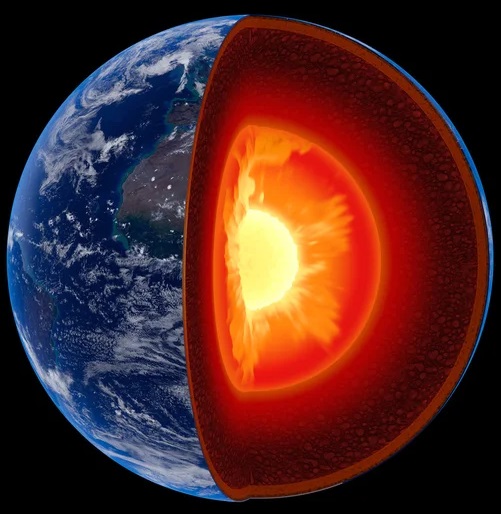Australian Scientists Just Discovered Earth’s Second Hidden Core in 2023 and It Could Hold Secrets to How Earth Was Really Formed
When Thanh-Son Phạm and Hrvoje Tkalčić, a pair of researchers at The Australian National University, examined an intense set of earthquakes, they were stunned by what they found. The seismic waves sent reverberations through the entire planet, traveling back and forth up to five times, thus confirming the existence of an Inner-most Inner Core (IMIC).
Described as a solid metallic ball, the duo estimated its size to be around 800 miles in diameter, slightly bigger than what earlier studies had predicted. The IMIC is said to constitute less than one percent of the Earth’s volume and its discovery has left scientists in awe, considering that it may have been a time capsule of our planet’s history.
The notion that Earth’s inner core is a relic of the past, containing information about a catastrophic event that could have altered our planet to its current state, is nothing short of fascinating. It has sparked debates and discussions among researchers, leading them to suggest that further research is required.

The seismic waves that helped researchers unravel this mystery also provide an insight into our planet’s inner workings. They may help scientists understand the tectonic shifts caused by earthquakes, which can help us mitigate their effects in the future.

The discovery of Earth’s second inner core is an important step towards developing greater insight into the planet’s past. It also reinforces the idea that seismic waves are capable of uncovering layers of information about our planet and its core. Hopefully, the revelations of Thanh-Son Phạm and Hrvoje Tkalčić will lead to further research and understanding.
Explore Related Articles

Aaron Rodgers Jeopardy Question Indirectly Exposing Evils of American History Goes...
On every episode of Jeopardy there are always a few questions that people remember long after the episode is over. Questions that resonate deeply within people for various reason. As example Aaron Rodgers' Jeopardy question indirectly exposing evils of American history is going viral.
The Jeopardy question Aaron Rodgers asked...
Was Conservativebeaver Website Shut Down After Pfizer Demanded Dreamhost Reveal Identity...
ConservativeBeaver.com went viral after posting an article about Pfizer CEO Albert Bourla getting arrested by FBI, and being charged with fraud. The allegations were false, and now have possibly led to the demise of the website and it's owner.
Conservativebeaver.com Shut Down after Pfizer CEO Demands Dreamhost Reveal Identity of...
Ted Cruz’s Reaction to Herschel Walker’s ‘Erection’ Gaffe on Live News...
When you're a politician talking concisely and clearly is of the utmost importance, because with the world watching any slip of tongue can turn into a disaster situation. For Herschel Walker that moment came during a Live News segment on Fox News with Ted Cruz and Lindsey Graham by...






